How providers can ‘think outside the clinic’ and start the conversation
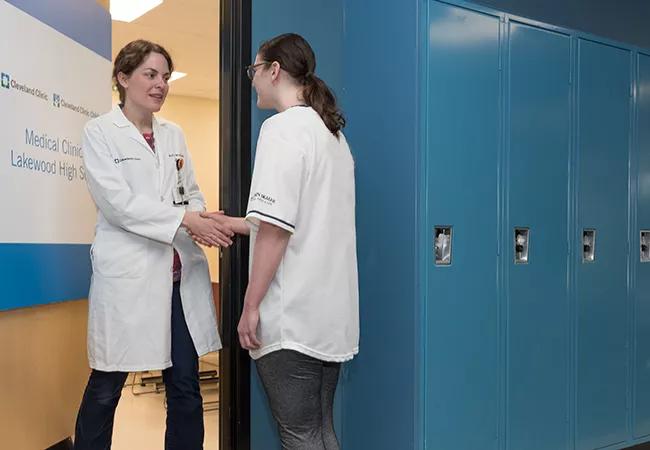
One point that gets overlooked in our national focus on school shootings is that suicide, as the second leading cause of death among U.S. adolescents, is another formidable threat to the lives of American high school students.
Cleveland Clinic is a non-profit academic medical center. Advertising on our site helps support our mission. We do not endorse non-Cleveland Clinic products or services. Policy
“Teachers and administrators are concerned, but they don’t always have the skill set or experience to manage students with mental illness,” says Molly Wimbiscus, MD, a child and adolescent psychiatrist at Cleveland Clinic. “And mental illness typically isn’t visible. A teacher can see when students have other illnesses and know when to send them to the nurse’s office.”
Clinicians have a responsibility to step in, she contends, noting that 37 percent of kids with mental illnesses don’t graduate from high school, according to a recent U.S. Department of Education report.
“We need to think outside the clinic,” says Dr. Wimbiscus. “Clinical care, with its prescription medications and therapeutic techniques, isn’t enough if a child misses the opportunity for lifelong stability through education and a career.”
Dr. Wimbiscus has begun collaborating with school districts in Northeast Ohio — mainly administrators, teachers and school counselors — to improve the care of students with mental illness.
A few regions of the U.S. are already “pockets of excellence” in school mental health, she says. And while some schools in Northeast Ohio currently have effective mental health programs, their efforts aren’t streamlined, due to disparate programs, municipalities, school districts and healthcare providers.
In response, Dr. Wimbiscus has assembled an interdisciplinary team that aims to develop a standard of school mental health care in Northeast Ohio that incorporates best practices from successful models around the country and is uniquely responsive to each district and school locally. “Our goal is to share what we know and what can work for each individual school we are working with,” she explains.
It’s not really a program, she adds, but simply an attempt to change common practice, starting with better communication between schools and mental health professionals. “Clinicians aren’t incentivized to spend time communicating with schools because there’s no reimbursement for it,” she says. “We’d like to think longer-term and demonstrate with data that patient outcomes can improve with this approach, which is simple but does carry some costs. This is really about proof of concept, to show insurers and legislators that this can enhance overall healthcare value in the long run.”
Between HIPAA and FERPA (the Family Educational Rights and Privacy Act, which protects the privacy of student educational records), healthcare and education professionals are trained to guard patient/student information.
“Not sharing information has driven a wedge between us and affected how we create multidisciplinary teams to help kids in need,” says Dr. Wimbiscus. Plus, she adds, medical professionals are conditioned to communicate with patients and their families, but not so much with schools.
“It seems simple: We just need to talk to each other,” she says. “When clinicians finally connect with teachers and explain the impact of a student’s mental trauma, it can improve the care of that student. But there are so many challenges getting to that point. Kids are getting lost in the cracks of our lack of communication.”
Cleveland Clinic’s Center for Behavioral Health has opened lines of communication with several school districts in Greater Cleveland. Below is a roundup of what’s working.
Bridge team. Students returning to school after a mental illness receive support from a bridge team, including school counselors and, in one district, a newly created “transition coordinator.” The team alerts school faculty and staff of a student’s need for extra care during their re-entry.
“Maybe teachers should reduce the student’s workload for a week or two,” says Dr. Wimbiscus. “Maybe staff need to avoid triggers, like talk of a suicide attempt or death of a family member. Maybe the bus driver needs to be extra welcoming or reserve a seat for the student. All these things can build a bridge so that mental health care doesn’t stop at our clinic walls.”
Without programs like this, most school personnel don’t know when a student is absent due to a mental illness. “Parents often are leery of sharing their child’s mental health issues with the school, but mental health specialists should encourage it,” says Dr. Wimbiscus. “If we explain that their child may need help getting back to a normal routine, parents are more willing for us to reach out to the school to help develop a transition plan.”
Monthly meetings. One school district has been hosting monthly meetings to discuss strategies and procedures for helping students with mental illness. Meetings convene school counselors and therapists, the school nurse, a school social worker, Cleveland Clinic medical staff and therapists from a community mental health agency.
“We wouldn’t be interrelating otherwise,” Dr. Wimbiscus explains. “Bringing everyone together ensures consistent care for students and builds confidence for school personnel dealing with mental health crises.”
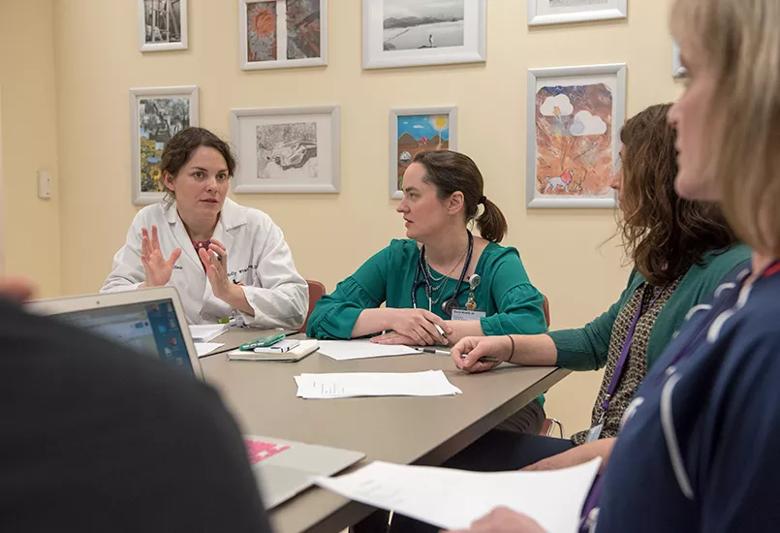
Dr. Wimbiscus (left) leads a monthly meeting of the interdisciplinary team at one school district to discuss strategies and procedures for helping students with mental illness.
In-school clinic. A certified nurse practitioner, social worker and psychiatrist are available during school hours in a dedicated Cleveland Clinic “outpost” in one high school. (The photo at the top of this post shows Dr. Wimbiscus greeting a student at this in-school clinic.) All students re-entering school after psychiatric hospitalization can be seen within 48 hours by one of these providers.
In addition, the medical team offers monthly drop-ins for teachers needing counsel on handling specific mental health challenges in their classroom.
Fellowship training. All Cleveland Clinic child and adolescent psychiatry fellows now complete a nine-month rotation in a school. They learn the benefits and challenges of working in schools, the laws governing the education system, how to navigate those laws to best support patients and families, and more.
The rotation helps forge a friendly, cooperative relationship between schools and mental health clinicians, says Dr. Wimbiscus. It will be offered to other healthcare providers and trainees who want to improve their knowledge and skills in coordinating care for their young patients.
Each school’s needs are unique. Rather than prescribing a program, Dr. Wimbiscus recommends inviting local schools to share their needs so your practice can offer ways to address them.
Many efforts led by Dr. Wimbiscus originated with requests from school personnel. She also surveyed school counselors, administrators and psychologists to uncover more needs.
“Be flexible and creative,” she advises. “Initially, your solution may just involve having conversations with school staff or providing consultation on a specific situation.”
Additional advice includes taking care to build a strong interdisciplinary team that’s committed to the program’s mission and finding leadership that embraces the mission for the long run. “That’s key, since it may take many years for impacts to manifest in terms of graduation shifts and similar outcomes,” she notes.
Clinicians don’t just need more research or funding to improve adolescent mental health. They need to break down communication barriers and offer support where adolescents are — in schools.
“When I call school personnel, they’re often surprised but happy to hear from me,” Dr. Wimbiscus observes. “Many say it’s the first time they’ve ever talked to a student’s doctor. We need to train schools to expect, and request, conversations with us.”
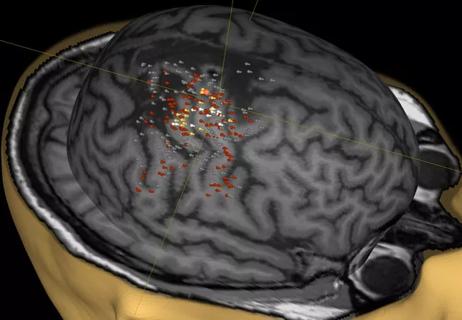
A noninvasive approach to map eloquent areas before surgery
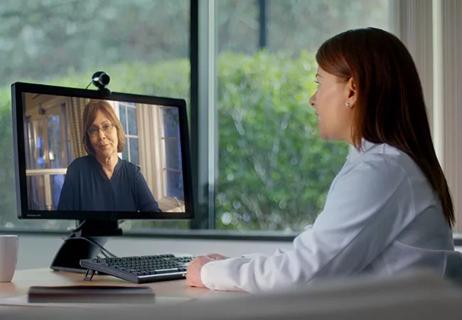
Physician reimbursement policy experts join forces with IT and coders to enable digital transformation
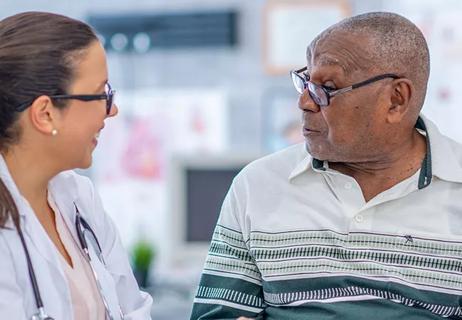
Minority Stroke Program focuses on outreach to racial and ethnic minority communities
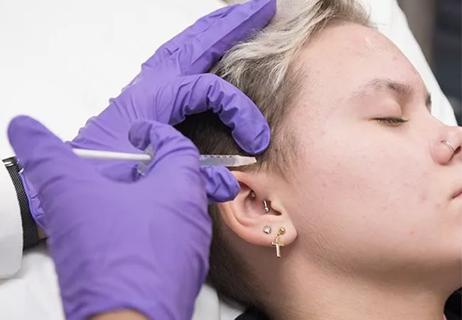
Excellent response seen with ongoing use in patients as young as 11

Q&A with a psychiatrist in Cleveland Clinic’s Transgender Surgery and Medicine Program

Time constraints, language barriers, substance misuse, mood disorders targeted for improvements
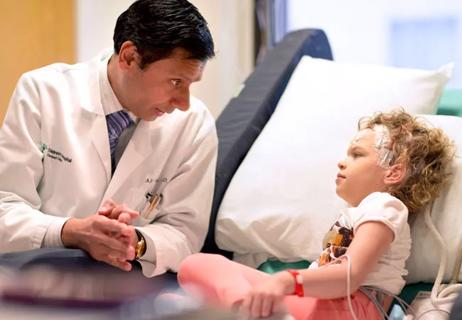
Project draws $1.6M to leverage telemedicine to create medical home, ease transition to adult care
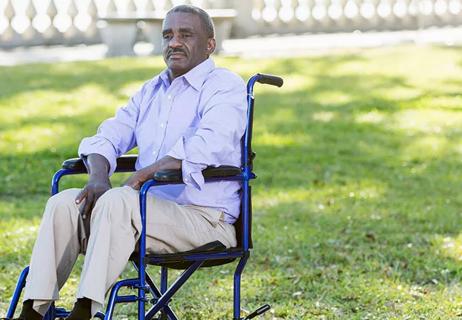
Comorbid depression is only one of the likely warning signs